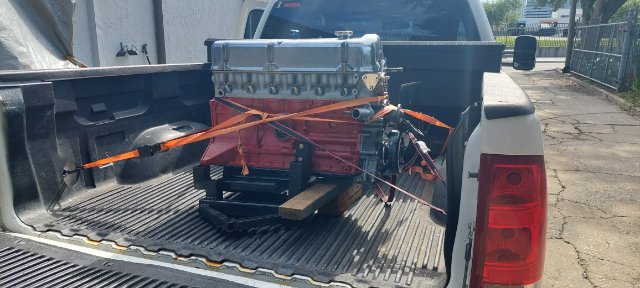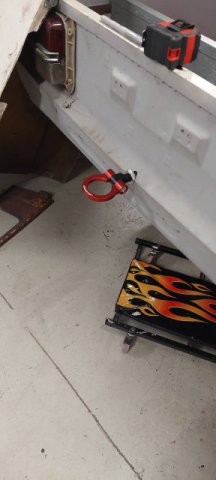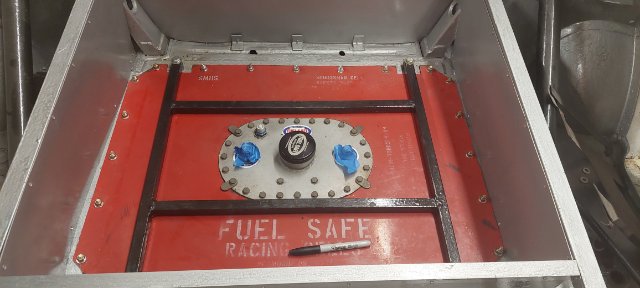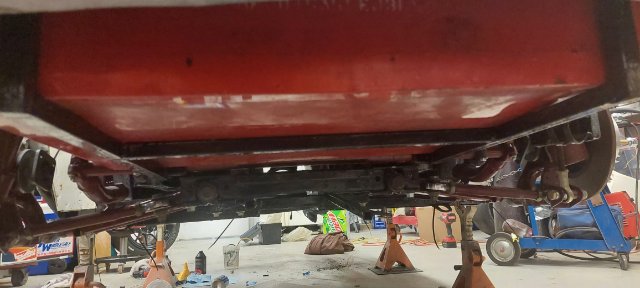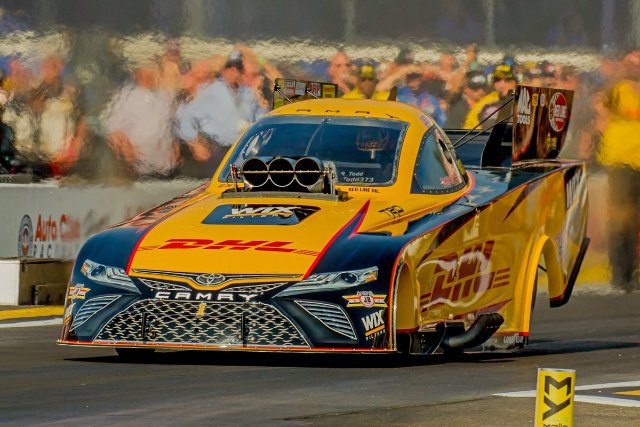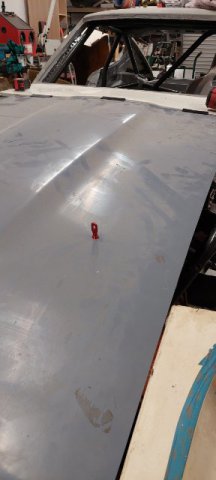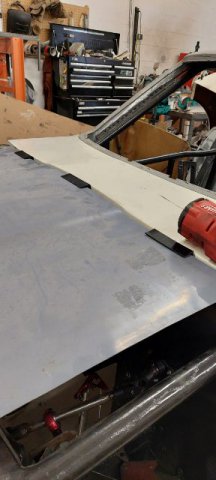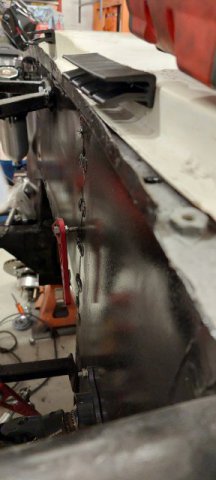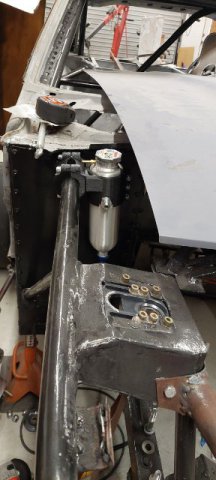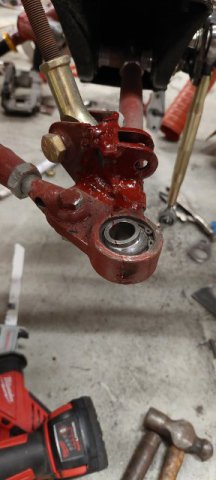-
Posts
877 -
Joined
-
Last visited
-
Days Won
47
Content Type
Profiles
Forums
Blogs
Events
Gallery
Downloads
Store
Everything posted by clarkspeed
-
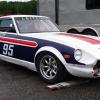
IMSA GTU vintage racer build
clarkspeed replied to clarkspeed's topic in S30 Series - 240z, 260z, 280z
I just disassemble them, clean, and reassemble. As long as the o-rings look OK and no metal inside. They tend to get gummy in the inside. Also replaced all the fittings and gauge. Dont remember pedigree of this one but may have bought used. Currently building my own cable remote valve. But it will be mounted in passenger floorboard. I usually wrap with some header insulation to keep heat down. Never had any leaks. Another milestone complete. -

IMSA GTU vintage racer build
clarkspeed replied to clarkspeed's topic in S30 Series - 240z, 260z, 280z
Wish I had more to show. Started with some of the electrical and plumbing. Changed a set of 20" truck tires on the tire machine Cleaned out the Accusump I had. Those things get really nasty over time, but no metal chips seen. Will pick up the motor Friday. AND I installed the rear tow hook! -

IMSA GTU vintage racer build
clarkspeed replied to clarkspeed's topic in S30 Series - 240z, 260z, 280z
15 gallon. Yea, needed for longer races of 50-55 minutes. There is a mandatory 5 min pitstop, but I don't want to deal with refueling. I usually see little over 5 gal burn in 20 minutes and fuel to level needed. -
Sorry I have not been following. I would have recommended a few minor changes. But it looks spectacular.
-

IMSA GTU vintage racer build
clarkspeed replied to clarkspeed's topic in S30 Series - 240z, 260z, 280z
Got a little behind due to work travels. I'm really lucky when I do travel it is to some nice places. It almost makes up for the endless time spent in airports and rushing to the next place. Last 2 weeks were Portsmouth Great Brittian, Berlin, and Piza Italy. Anyway fuel cell finally installed and brakes leak checked. This is an older cell I re-foamed and replaced gaskets. -
POST #5 and last. Advanced Data Collection and Analysis If you want to go beyond the barebone basics then you have some tough decisions to make. Especially if you are not familiar with this kind of analysis. Before you go out and purchase something, you should think about what your requirements are. I put together a list of some options I am aware of. 1. Does the software allow you to easily look at what you want to see? Does it automatically generate graphs you need? Does it easily let you drill down in details? Do you need a configurable screen overlay? Do you want to create custom ways to look at your data? 2. Do you need to download to excel? Time is money here. The simple systems should spit out something you can use quickly if at an Autocross, and the most complex systems should have the ability to develop you own analysis screens so you can make decisions quickly based on complex data. 3. Do you want to primarily analyze the driver inputs, monitor vehicle parameters, improve car performance or a combination of all 3? 4. How do you want to display and interact with the data? a. Standalone box that records and displays data via. phone or built in screen. Think about how quick you will need to access the data. b. Box that records data and downloads it over Bluetooth or Wi-Fi. c. Box that has a memory card you must remove and transfer into a laptop. A little archaic and cumbersome. d. Box that transmits real time data over cell phone network (telemetry). This is really nice for endurance racing. 5. What is the “total” Price – software, connections, sensors 6. Will you be sharing data with other people? 7. Do you want to combine with vehicle OBD II data? 8. Do you have future expansion needs or are the basics enough? 9. Do you want to combine with a dash readout? 10. Does the system have the resolution and accuracy you need? 11. Does the system have the ability to use at the location of your events. Is power available for a laptop? Is the GPS accurate enough? Durable enough for desert racing? Boat racing? 12. Do you want live driver in the loop feedback? I will talk more about this later. Personally I think systems fall into 3 catagories. Beginner level stuff is usually cheaper and limited on what you can record and how fast you can record, typically 5-50Hz Stand alone units like AIM SoloII, Garmin, and RaceBox have some great products. They don’t allow additional sensors, but catch all the basics, are accurate, easy to use, and fairly priced. Phone apps are also in this level and are a great place to start if you want to get a feel for the potential advantages of collecting data can do. But phones are more limited in analysis and the sensors are not as accurate. Price < $1000. Mid-level units are one step above. Usually record multiple channels and can interface with your CAN system. 50-100Hz is the normal sample rate here. They have great software programs that can be simple or customized. And math channels that can calculate your own variables. Typically interface with sensors you choose. Most can be upgraded to something very close to a top level system. Price $1000-$4000. The top level pro systems are fully customizable and are suited to mate with pro level sensors and measure just about anything you can dream up. 1000Hz sampling rates are common. They have multiple complex filtering options, telemetry options, dash, engine control, on and on. $4000+ The hardware boxes themselves are fairly simple. Usually only a few connections and if you are using external sensors, most systems provide plug and play capability. High end automotive sensors can be expensive but as mentioned earlier, cheaper substitutes can be put together using simple materials like load cells and potentiometers. String pots are a good universal sensor for movement and can be purchased used. Even if using custom sensors or adapting OEM sensors they are usually only 2 or 3 wire connections (+/-/Signal). Most all boxes have accurate GPS location and high-fidelity G sensors. This usually requires a flat mounting near center of car. Some even include a yaw sensor. The main differences are how many sensors it can monitor (channels), how many samples does it take per second, and does it have a CAN interface to monitor vehicle functions already available. The higher up the ladder you go, the more technical the systems become. Most all can be used at a basic level, but to fully utilize the software usually requires an engineering degree. The analysis software is a very important interface. If pure driver improvement is your goal, then one of the best features you can get is a way to provide direct driver feedback. Think about a coach sitting next to you telling you to brake later or carry more speed here. And as I mentioned in an earlier post, by far the largest component of faster lap times is driver dependent. I became addicted on this technology while driving iRacing sims during the pandemic. iRacing provides a live readout of slip time to your best lap and more importantly, a bar graph of the slip rate. The slip rate is how fast you are losing/gaining time to your best lap. An example would be if you spin the tires on corner exit and lost 0.5 second quickly. You would see the red bar max out the graph for a moment. As you gather the car up and accelerate down the next straight you would see the bar graph just very slightly in the red zone as you lose a small amount of time all the way down the straight. If you perform a sequence better than your fastest lap, you get a green bar. Simple and very effective. I believe all the higher end systems provide this feature sometimes depending on also having their display. On the low end one of the more innovative systems is RaceBox. Just a simple red/green bar graph is the only output. But complex programming runs in the background to filter out the noise and make it as accurate as possible. Another interesting unit is the Garmin Catalyst. It provides an audio instruction on where and how to go faster. The Garmin has it’s own screen and quick drill down graphs to show the time differences. There used to be another stand alone audio coach unit but I could not find it on a search.
-
I know very little about aero design. My race classes are fairly restrictive. I did attend a seminar by Jeff Braun where he described a small flap mounted slightly in front of front fender cutout and in the radius of the cutout, not really a dive plane and certainly not a gurney flap. Generating turbulant air next to the wheel pulls a vacuum under the hood. He said it works every time and called it the cheapest easiest way to make downforce if legal to do so. You can see this design on every NHRA Funny Car. Here are some cool videos showing F1 and Nascar Aero design. The F1 video is amazing.
-

240z SCCA vintage race car, restoration
clarkspeed replied to AydinZ71's topic in S30 Series - 240z, 260z, 280z
Love the pic of your kids holding bumper 😀 -
I really like the idea.
-
Static compression is calculated based on bore, stroke, and volumes. Dynamic compression takes into account valve opening events. Longer duration cams reduce the dynamic compression. I have read you can have too much dynamic compression, say a low duration cam on a high compression engine, but I have never never seen any real numbers on what the limit is. My my guess would be less power at higher rpm's.
-

IMSA GTU vintage racer build
clarkspeed replied to clarkspeed's topic in S30 Series - 240z, 260z, 280z
Yes, not so much the transducers, but the entire firewall. On the 1000 pics I have viewed when planning this thing, I realized a sandblasting of the area behind the tires is expected. So I have a guard planned for the front and a full fender liner for the rear. Will probably fab both in the next few weeks. -

IMSA GTU vintage racer build
clarkspeed replied to clarkspeed's topic in S30 Series - 240z, 260z, 280z
A shot of the front and rear pressure transducers and brake pressure switch. Replaced foam in fuel cell tonight. Then immediately began ordering more parts I discovered I need. -
Found a cool thread on subject. https://www.rx7club.com/race-car-tech-103/differential-oil-cooler-pump-1015407/ Seems Genesis and Mocal also make pumps. Maybe you could find a used one. Also read you should mount pump downstream after cooler to cool the oil some before it hits the pump. Positive displacement pump so doesn't matter.
-
-
Mine looks like a Tilton, but didn't have a sticker on it. That's why I thought it may be counterfeit. It came in a Tilton box. Probably had it 7-8 years but only put maybe 12-15 hours on it and sold the car. I think I read somewhere they are actually cheap spa pumps converted for high temp use. Never had any issue with it. No leaks and still moves fluid. Yes Tilton is very proud of it. I do like the idea of a pulley driven pump. And understand your packaging challenges. Maybe it is possible to cut a hole in the deck or tunnel sheetmetal and mount on inside? I have seen that done before with an Alternator. Cover it all back up with a sheet metal box?
-
Been meaning to chime in but I've been busy with family and work. Some of my thoughts and observations. 1. I think some lsd's get hotter than others. Helical gears hotter than friction disks. I don't know many who run the stock Nissan lsd disks that have had problems or run coolers. And of course most racers change fluids frequently. Greg falls into both of these. And he is not running a 400Hp V8. 2. My R200 with Quaife got pretty warm during 50 minute enduro races. I took multiple readings with a IR gun after. I seem to remember the readings around 250-275 and I thought that might be detrimental to the oil. 3. I installed a Tilton electric pump and a roughly 8x12 plate cooler tucked up under the rear fender. All -8 lines. It did not have any direct air flowing to it and no ducting. My temps dropped drastically to under 200 when the pump was running. The damn thing was pretty loud when running. I then installed a 180 degree temp switch in the cover so I did not have to listen to it all the time. It tended to trip the switch after 2-3 laps. 4. I found a modified cover on EBay. It had 2 -8AN to NPT fittings welded in it. 5. It was a little tricky filling the diff with oil. I ended up filling up to the sight level while the pump was running so it had enough oil. 6. The tilton pumps are just a standard pump with special seals. Viton I think. But on one else has the seals when I was looking years ago. So I ended up buying a pump on ebay. I knew there were people selling the standard pumps as Tilton units, but I have never had a problem with mine. I think it is legit. 7. And finally, synthetic oils don't break down anything like conventional. So maybe look at it as extending change interval? I don't think you could break down even a conventional oil in say 5 or 6 20 minute track sessions at 350F. And I wouldn't have a problem adding a 1Hr Enduro to that if synthetic. But I think after adding the cooler I went to changing diff fluid along with tranny every 3 race weekends instead of every weekend.
-
Post #4 – Basic data systems, keeping it simple. Now I will talk about something that can record data at least 20 times a second and allow you to review the data with a graph or chart. Real analysis. But what kind of system do you need? There is a wide-open field of devices that can do just about anything and new stuff being released all the time. Electronics have gotten so cheap that even the most complex systems are affordable to a small racing program. To start I will list the most basic data you will probably want to analyze performance. Lap time (segment times) Speed vs. Distance graph G-G graph. Track Map Many people are intimidated by this stuff. But I think even the most tech adverse people can understand these 4 basics. And I think most every data system available can provide this info. Maybe you just need to watch a few YouTube videos on how to display this info. Or ask a friend. You may never go any farther than this, but anyone with a data system should at least be able to analyze these 4 things. I will briefly explain how I use these 4 basic data streams. Lap times are the #1 measurement of motorsports. Most competitions have some sort of feedback on everyone’s lap times so that is usually covered. The nice thing about a data system is your times are recorded for you and can be reviewed right after you come off the track. There might be some programming required to set up for this. Maybe it is pushing a button at the start and again at the finish. Maybe it is downloading the appropriate track program that automatically brings in the start/finish line or it could be adding markers on a track screen. Again, watch a video if unsure. So how do you improve your lap times? This should be obvious, it is going to take some experimentation.. A different approach to a corner, shift point, different tires, whatever you try needs to be backed up by a better or worse lap time. So you will need to become a test driver and this is important. My term is ABE, Always Be Experimenting. The best drivers are experimenting all the time. And they have a good “feel” for what works without waiting for the lap time. They use other inputs and senses for this, not really a “butt dyno”. Often it can be just checking the RPM you hit at the end of a straight or checking your location on track at your shift point. Either way, you will need to record what you change, when you changed it, and what the results were. Along with any extenuating circumstances like passing another car. Adding Segment times take this a lot farther and allows you to break things down. It is much easier to look at a specific segment and keep all the other things that happen in a full lap out of your focus. Keep in mind though, track conditions can change. The lap times you ran a month ago may be different now. Next I will talk about Speed vs. Distance graph. This really simple graphic can often tell you everything you need to know. It is extremely powerful and by far the most used analysis technique and as far as I know, every system will provide it. But the first problem you will run into is what are you going to compare your data to? If you have the luxury of sharing data with others, this can be a great advantage. Another approach is to share the same car with others. The pro’s do this all the time with other team members. Just overlay multiple data streams you can immediately see what the fastest approach to any given corner should be. But this approach is not always available. So I will go into some more detail on analysis techniques when comparing yourself to yourself since that is often the case. An easy thing to say is maximize the speed on the graph. Even better way to think of it as maximizing the area under the curve between point A and B. Any line with a higher speed is reducing lap time. But you need to look at the big picture. A higher speed trace going down a straight is most always a faster lap section. A higher trace before a turn or in between 2 turns may not be the fastest way. If just comparing data to yourself, look for Inconsistencies. Good drivers lay down repeatable laps over and over again within a few tenths. Think about why you are doing something different in a corner lap to lap. What are you struggling with? Could a change to the car make things better? Do you need a better reference point to focus on? Are you focused on the right things? You can also look for loss of traction or oversteer. They tend to show up as a downward blip in the acceleration that is not due to gear change. Look for blips between the apex and track out point. Analyze braking carefully. Transition from full throttle to full braking should happen very quickly and at the same point each time. Speed should scrub off quickly and then level out as you transition into the corner. Braking too late can cause the minimum cornering speed to drop off. Braking too early can lead to soft pedaling the car and lost time. Also look for “coasting” up to the brake point. Early Apex or understeer will often show up as a longer time in the corner. Full throttle acceleration happens later as you feather the throttle trying not to run off the track. Other things can be seen in the chart like shift points, missed shifts, and loss of power. Next up is the G-G graph. It is not nearly as revealing as the speed vs. distance graph, but can point to some time left on the table. A desired friction circle should “push” out the 2 upper legs of the triangle to more of a curve. This is shown in the picture. My feeling is the time between turn in and apex is the “magic” part of driving. There is so much going on here and much time can be gained or lost. The goal is to transition from full braking G’s to full cornering G’s while utilizing 100% traction. Most drivers can corner at maximum G’s and know that feeling of slip angles being generated. And maximum braking can be learned just by doing it over and over again and getting a feeling for what the car will give you. But to ease off the brakes, while turning the wheel is a scary feeling. It takes commitment that the car will hook up immediately as opposed to slowing down, turning, and the bringing up the cornering load slowly which feels natural and safe. The better you transition and will almost always lead to lower lap times. In addition, G’s are a direct measurement of the grip you have. This can be a huge benefit when making changes to your car. And finally the track map trace. This is pretty self explanatory but make sure you have good accuracy with your system when studying the lines. And old data often does not overlay with new data so be careful when comparing over multiple dates. Look at turn in, apex, and trackout. Also consistency. And of course the sacrifice one corner for another corner type decisions. One of my favorites is to look for the shortest distance tradeoff. Releasing the car to track to the outside of a wide turn covers a longer distance. Especially big open turns. Sometimes generating more G’s and maintaining a tighter turn will cover less distance and result in a quicker time. Same applies to going wide to set up for a turn in on a wide track. It is also a big advantage to have the track map shown at the same time as the G-G Graph and the Speed vs. Distance graph. Next (and last) post I will list out some of the options available and things to think about before purchasing.
-

IMSA GTU vintage racer build
clarkspeed replied to clarkspeed's topic in S30 Series - 240z, 260z, 280z
I have decided to postpone majority of my body work. I really want to get it on track and start sorting before final finish. Most of the body panels are removable so not too difficult. I will probably shoot an epoxy primer on at some point and slap a number on the doors. Final paint scheme is still undecided and I have no stress about it. When I started the build I formed a bill of material I knew needed to be purchased or fabricated. Also estimated the budget. I have tried not to purchase anything until it is needed. That has been a tricky thing with all the supplier delays. I ordered brake pads during the holidays because they were on sale at Porterfield. Lucky I don't need them yet. Raybestos has no ETA and no projected ship dates. Strange how some parts arrive in 2 days and some 2 months. I ordered 3 x 18" Allstar braided brake lines from Jegs. 2 arrived late and 1 on back order with no ETA. WTF? -

IMSA GTU vintage racer build
clarkspeed replied to clarkspeed's topic in S30 Series - 240z, 260z, 280z
Without a doubt, body work is the worst task of all. I will put molding large fiberglass parts a distant 2nd. And everything in the garage will be covered in thick dust. On the lessons learned side, I wiped bearings in a relatively fresh engine after a few months of sanding. Without knowing, my engine builder ask if we had been sanding body filler in vicinity of an open engine. I said "maybe", and he said "I have seen this before". On the positive side, I ran the brake lines. First time I have ever tried running an entire system in AN3 fittings and flared cu-ni tubing. Pretty damn easy. And I was able to correct the few bending mistakes I made. 25ft roll of tubing, maybe 1ft of waste, and 4ft left over. And I rand the entire thing in probably 2.5 hours. No pressure checks yet. -

IMSA GTU vintage racer build
clarkspeed replied to clarkspeed's topic in S30 Series - 240z, 260z, 280z
Aydin you are probably around 30lb injectors. Plenty of calculators out there for sizing based on HP. I ended up buying the white Siemens/Bosch for my 3.0. They all tested dead accurate out of the box. The problem I am having is getting a fuel pump. I like the Bosch pumps and I have come to the conclusion Bosch makes a small body and large body unit. They have about 1000 part numbers based on OEM inlets and outlets. The famous 044 pump is WAY overkill for a NA car. I had one and a fuel line rupture sent multiple gallons on the ground in a few seconds. Scary. And just circulating gas around only heats it up. So really you only need something maybe 20% over you needed flow, max. So my holy grail, is an OEM based Bosch pump, small body format, maybe 0.25 NPT on outlet and inlet, that supports 300hp and is CHEAP. I have a BMW part number somewhere that is close to that. I have been looking for a more generic universal pump with no success so far. Most of the generic stuff is made for big V8's. Or other recomendtions? -

IMSA GTU vintage racer build
clarkspeed replied to clarkspeed's topic in S30 Series - 240z, 260z, 280z
Yes it has a built in heated ultrasonic cleaner. Works surprisingly good. It pulses the injector while it is cleaning. I put some old weber parts in there and they came out squeaky clean. It is not a shiny finish. A little brass brush brings out a shine. I want to buy a bigger cleaner now for larger parts. I have a set of weber's I need to recondition. I could not find much info on what to clean with. I ended up with an 1 Oz. Of Simple Green and 1 Oz of pine sol with maybe qt. Of distilled water. Stuff needs to be pretty clean before if goes in there of you will be changing the tank often. I am using 95% alcohol as a test fluid. I made 3 mods to the unit. Added to resistors for low impedance injectors and changed out the pressure gauge for a 4" Measureman unit from Amazon. Also added some tiny o-rings to seal against the hose barbs. I now do all the tests at 43.5psi. Usually the 1st 1 or 2 runs give odd results, but then they become repeatable. It only takes a minute to test. Maybe 3 minutes to set up. I justified the purchase because I have some older Mercedes injectors I think I can get some money for. When I combined the recovery money with some future checks for the race car, it tipped me over into the purchase. Seems like good insurance for the race car. The Prather videos are interesting when taken as a whole. He is a guy who grew up in the middle of SCCA competition with his father. He knows alot. Although he builds a boatload of Mazdas, he is not mark specific. He just applies attention to detail to everything he touches. No secrets. Same with engines. He is not the smartest guy, or the most innovative, or the most experienced with most cars. Just basics and attention to detail. Of course a lot of his details are lessons learned from past experience, but still mostly basic stuff. Like he always runs the same rear wheel/tire when doing dyna runs. Probably saw too much variation there. Jeez I think he goes to the Runoffs solo, but not sure. He supports multiple cars other than his. He built ground up 2 cars for Greg's brother Cliff who has 3 championships now in 2 classes I think. And they were Honda products. -

IMSA GTU vintage racer build
clarkspeed replied to clarkspeed's topic in S30 Series - 240z, 260z, 280z
Another new shop toy. Bought a cheap fuel injector cleaner/tester. So far so good. I wired a few dropping resistors to test the old Bosch low impedance stuff. Pulled a pile of old injectors out of storage and to my surprise most all fired. I will polish them up and sell the best flow checked results. Main goal is to Flow test and clean my injectors between race weekends. Seems like good insurance against any power loss due to clogging. Pick up the idea from Jessie Prather. If you are into race car building, the Jessie Prather Motorsports YouTube channel covers some good topics. His videos give a good overview of the level of detail required to build SCCA championship cars. -

IMSA GTU vintage racer build
clarkspeed replied to clarkspeed's topic in S30 Series - 240z, 260z, 280z
Finally got the hood located today. My original design using aluminum pins into the firewall did not look good. Pins were too long and created quite a lever arm. So I went back to my design from years ago but upgraded with some 3d printed brackets. Hood now slides into 3 cowl panel channels and will latch in the front. I drilled those holes in the hood like a confident person after measuring 3 times. -

IMSA GTU vintage racer build
clarkspeed replied to clarkspeed's topic in S30 Series - 240z, 260z, 280z
Hear, hear, now. This is my thread. Just kidding, if anyone has any race car related posts, bring them on! I spent a week or 2 trying to find a way to run 13's on my car. Tires are available for some wide wheels. And SCCA GTLite runs them. But in the end I didn't think I could get enough braking performance. So I focused on 15's and ignored 16's which is what everyone in my class runs. I have been super focused on reducing unsprung weight, especially rotating weight. A little less focused on sprung weight, so I hope that doesn't come back and bite me. But I do have some changes that could be implemented at a later date. Interesting enough, the John Thomas 240 which has won like 8 or 9 solo championships, has like a Arizona big brake kit. Way overkill. But he also runs like 100lb of balast instead of a passenger seat. He won another in 2022 as a guest driver. Fast dude and super nice guy. Not alot to show since last post. Sometimes you go backward to go forward. But definitely putting in some hours. Been planning and buying stuff for electrical and brake plumbing and clutch. Also realized I have about 20 parts I need to 3d print, so I got the machine running 24/7 in Nylon. I don't think I could build this car without the 3d printer. Example #64-i have 3" 3ft long orange brake hose. My run will need to be 4 to 4.5ft. I will just design and print out a 3" dia. brake hose union. No problemo. Here is a pic of the coolant tank mounted and my revised front control arm. I found the steering knuckles hit the original sway bar clevis I had welded in. So I relocated the clevis opposite the shock clevis. In the end this should actually be a stronger connection and give me a little more room for the brake cooling hose. -

IMSA GTU vintage racer build
clarkspeed replied to clarkspeed's topic in S30 Series - 240z, 260z, 280z
Sounds like Cary has the answers. I would be surprised if Greg had them brazed but I dont know. He is racing the EP car again in a couple weeks but I dont think I can make it. What caliper do you run? Stock correct? I didn't count the teeth but I think it is for a 350z? I think he said that is where the sensor came from. No plans for block. Just a spare. Price was right.....free.

